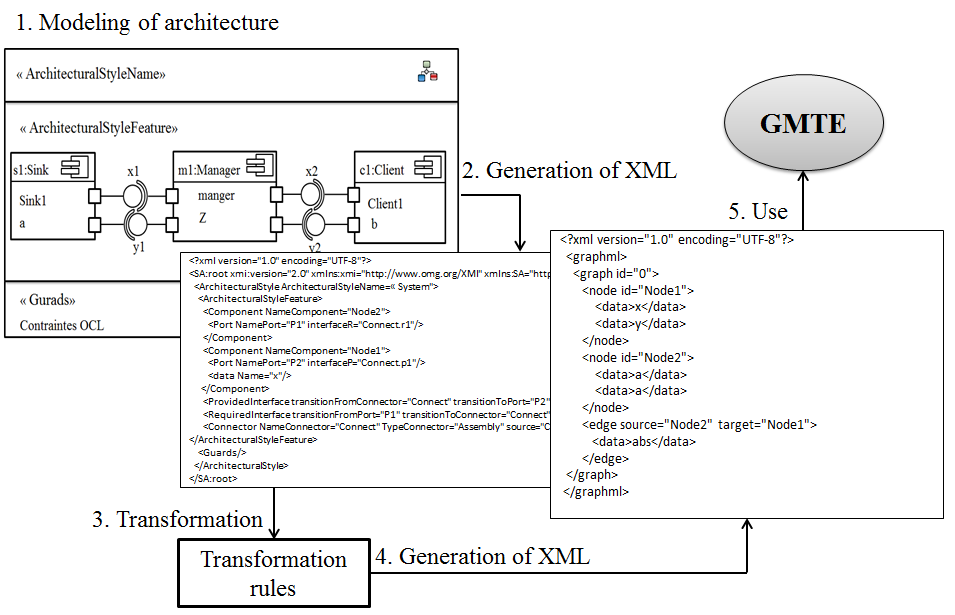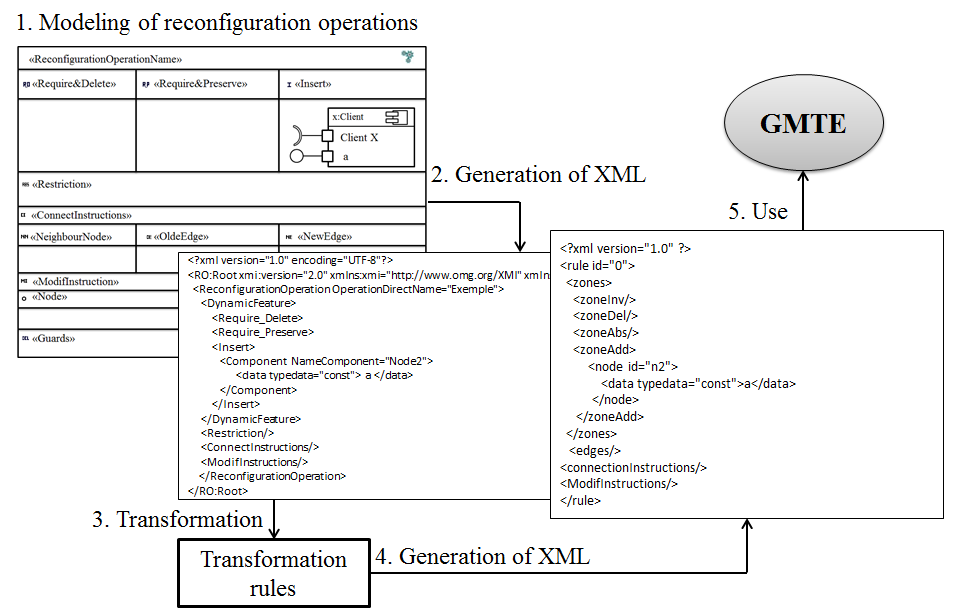
Menu:
Design and Implementation of an Eclipse Plug-in for Modeling Software Architectures
G-MEIDYA | ||
G-Meidya tool is designed to model the dynamic of software architectures. It is based on two steps: modeling and processing. The modeling step allows designing and describing software architecture using extended UML2.0 notations. The processing step allows run on a host graph a transformation graph rule. Our target is to propose an approach for modeling architectural style and reconfiguration operations that ensure the consistency. The graph transformation lays on graph grammar that allows the generation of graph (architecture and architecture styles in our case) correct by design. In our approach, the tool is implemented in the Eclipse platform and using GMTE (Graph Matching and Transformation Engine). The proposed approach is presented in two steps : a modeling step and processing step. The first step is to model the software architectures (SA). The second is to transform the models into the formal language of graph transformations (GT). Our approach is called G-Meiday, it is based on the approach Meidya (Modeling and Enforcing Invariants of Dynamic Software Architectures) for modeling software architectures and the graph transformation tool GMTE. The objective of our approach is to generate a new architecture after the execution of reconfiguration operations for architecture already defined. This architecture must respect his architectural style which is defined by the designer. G-Meidya uses the formal language of graph transformations to generate a new architecture after the execution of reconfiguration operations. | ||
 | ||
In the first step, the designer specifies the dynamic software architecture using a UML profil that we propsoe. Firstly, after the declaration of an architectural style of a system by the designer, he define an architecture (Component, Connector and architectural constraints) that meets their style. Secondly, he proposes an operation reconfigurations to evolve the architecture. Finally, the designer maps automatically UML models towards XML language. He obtained two files in XML format : the seconde define the architecture and the second define the operation reconfigurations In the second step, the designer automatically translate the graphic UML models (i.e. defined in the first step) to XML language. Firstly, the designer transform automatically the models presented in XML format to Graph natation (architecture to graph and reconfiguration operation to rewriting rule).The result of this step is to generate an structure define the graph and an structure define the rewriting rule in GraphML format (according to the specifications fo GMTE tool). Secondly, the designer used the GMTE tool of graph transformations to execute the rules on the graph. The result is a new graph. This graph shows the new architecture after the execution of reconfiguration operation. Finally, he converts the result obtained in graphML format to an graphic UML model. | ||
Tool Support | ||
The proposed approach for modeling and translating into Graph specifications was realized as two Eclipse plug-ins. |
||
| ||
Case Studies | ||
Download | ||
| ||
Contributors | ||
| ||
Research Groups | ||
|

